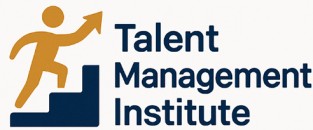
Understanding the Role of Document Management in HR
Unveiling the Importance of Document Management in HR
In today's fast-paced corporate world, the human resources domain is undergoing significant transformations. Among these transformations, efficient document management stands out as an essential aspect. A well-implemented document management system (DMS) in HR not only streamlines operations but also significantly boosts overall productivity. The role of document management in HR cannot be overstated. Managing employee documents, records, and data is a critical task that demands both accuracy and efficiency. An effective management system ensures that all employee records and files are systematically stored, easily accessible, and securely managed. This is crucial for maintaining compliance and meeting regulatory standards, reducing the risk of hefty fines due to mismanagement or data breaches. By adopting best practices in digital document storage and utilizing robust management software, HR departments can focus more on strategic initiatives such as enhancing employee experience and improving performance reviews. Moreover, integrating cloud-based solutions allows for more flexible file management and ensures that employees can access documents remotely and securely, which is especially relevant in the age of remote work. One key benefit of modern management tools is the reduction in time spent on manual tasks. Automated processes within a document management system enable faster retrieval and processing of employee files, liberating HR professionals to focus on high-impact activities. Additionally, having a secure system in place guarantees that sensitive information is protected against unauthorized access, thereby safeguarding employee privacy and trust. To explore how SaaS solutions can further optimize operational tasks, particularly in payroll, consider the insights provided in this streamlining payroll article. Pairing such systems with a comprehensive DMS can lead to revolutionary improvements in HR management.Streamlining Recruitment and Onboarding
Optimizing Recruitment and Onboarding Processes
In the realm of human resources, the recruitment and onboarding stages are foundational to building an effective workforce. Implementing a human resources document management system (HR DMS) can directly enhance these processes, ensuring that the transition from candidate to employee is seamless and efficient. Efficiency in recruitment heavily relies on proper documentation management. A robust document management system allows human resource departments to streamline how they handle and access documents related to applicants. Utilizing the system's tools can significantly reduce the time spent on administrating employee records and recruitment files.- Centralized Employee Documents: By centralizing employee documents digitally, HR managers can easily track applications, resumes, and interview notes. This aids in maintaining an organized workflow and ensures that no important employee files are overlooked during the recruitment process.
- Automation of Document Handling: Automating tasks associated with document management can save HR teams a substantial amount of time. For instance, HR software best practices include automating the sending and receiving of digital documents, expediting the recruitment timeline, and allowing HR personnel to focus on candidates rather than paperwork.
- Secure Access and Compliance: Recruitment involves handling sensitive data. A document management system provides a secure, cloud-based environment for storing sensitive employee data, ensuring compliance with data protection regulations. Employees involved in recruitment can access documents safely and securely, knowing that the system prioritizes data privacy.
- Seamless Onboarding Experience: Onboarding is a critical stage for new hires, and the ease of accessing employee records during this period can significantly impact their overall experience. With a document management system in place, onboarding processes like performance reviews, employee records management, and training documentation can be managed more effectively, enhancing the initial experience for new employees.
Enhancing Compliance and Security
Importance of Keeping Data Secure and Compliant
In the world of human resources, maintaining the security and compliance of your document management is vital. A robust management system can be pivotal in ensuring that your organization's sensitive employee records remain secure. Keeping files and documents secure helps in safeguarding employee data from breaches and unauthorized access. With the increasing threats in the digital landscape, employing best practices for document storage, particularly cloud-based solutions, can enhance your security. Compliance is not just regulatory, but also a commitment to employees, ensuring that their information is processed in a responsible manner. Implementing a document management system that incorporates compliance tools ensures that all employee files and documents meet necessary standards and regulations. By doing so, organizations can avoid hefty penalties and maintain trust with their workforce. Choosing management software with features that focus on both security and compliance provides multi-fold benefits. As an illustration, access controls ensure that only authorized personnel can handle sensitive employee files, while audit trails help track document changes, ensuring accountability. Systems that integrate features like secure document locator aid in swift access to employee documents, enhancing both efficiency and security. For more insights on creating efficient HR environments through secure systems, you can explore the optimizing workforce efficiency with a labor management system approach, ensuring both productivity and protection are prioritized in your document management endeavors.Improving Employee Experience
Boosting Employee Engagement
An effective Human Resources Document Management System is invaluable in enhancing the overall employee experience. By making essential employee documents readily accessible, employees feel empowered and valued. Instant access to personal files, such as performance reviews and employee records, eliminates frustration and promotes a transparent company culture. Furthermore, employee documents stored in a document management software are secure, yet easily accessible. This ensures that any compliance requirements related to employee data are met with precision. A well-maintained employee document file can significantly reduce time spent searching for important information, allowing employees to focus on their roles without unnecessary distractions. When digital document storage solutions are correctly implemented, it enhances efficiency by leveraging management software features tailored to meet HR needs. For instance, cloud based systems not only provide a secure document storage solution but also allow for seamless integration with other tools, streamlining HR processes across various platforms. Incorporating these best practices into a document locator strategy ensures that employees can manage their records effortlessly, fostering a sense of control and satisfaction. This approach aligns with the overall goal of enhancing the employee experience while maintaining a structured records management system. Ultimately, the benefits of a robust document management system extend beyond efficiency. They help build a more engaged and high-performing workforce, setting the stage for organizational success.Integrating with Other HR Technologies
Integrating Efficiently with Modern HR Systems
In today's fast-paced business environment, a comprehensive Human Resources Document Management System (HRDMS) does not exist in isolation. It must integrate smoothly with other HR technologies to offer maximum efficiency and benefits. Here’s why effective integration is vital:- Streamlined Data Access: Integrating your document management software with existing HR systems such as payroll, talent management, and performance reviews ensures immediate access to necessary employee files. This helps in reducing time spent searching for employee documents and increases management efficiency.
- Centralized Data Management: A robust HRDMS, when integrated with other HR tools, facilitates a unified point for storing employee records and files. This centralization is integral for maintaining a seamless flow of information, ensuring that employee data and documents are updated in real-time across various systems.
- Enhanced Compliance and Security: Linking document management with HR technologies enhances compliance with legal and industry standards. With secure document locator features, employee files remain protected and confidential, ensuring data privacy and security adherence.
- Improved Employee Experience: Employees benefit when they can access documents quickly without cumbersome navigation. An HRDMS integrated with cloud-based solutions empowers employees, giving them control over their employee files and personal data, potentially increasing satisfaction and performance.
Choosing the Right Document Management System
Selecting a Document Management System for HR
The choice of a document management system can have far-reaching implications for a company’s efficiency and compliance. Integral to human resources, these systems help streamline various processes, enhance security, and improve the overall employee experience.
When selecting a management system, it is crucial to consider several factors to ensure it meets your organization’s needs effectively:
- Features and Capabilities: Ensure the system offers robust document storage and retrieval capabilities. Specific features like performance reviews monitoring, employee records management, and easy access to secure documents are vital.
- Integration with Other Software: The system should seamlessly integrate with existing HR technologies. This is essential for optimizing workflows, as noted in earlier sections regarding recruitment and onboarding enhancements.
- Security and Compliance: Robust security measures ensure sensitive employee documents are well-protected. The system must also help facilitate compliance with regulations such as GDPR or HIPAA as discussed in previous sections.
- User-Friendliness: A more intuitive interface can significantly reduce the time spent on managing employee files and documents. This enhances productivity across the HR team.
- Cloud-Based Solutions: A cloud-based system offers flexibility in accessing files from anywhere, providing added convenience and enhancing the employee experience.
- Cost and Value: Evaluate whether the software's benefits and functionalities justify its cost. It’s crucial to assess the return on investment through productivity gains and improved compliance.
By keeping these considerations in mind, organizations can select the best employee management software that aligns with their strategic objectives and enhances their HR functionality.



-large-teaser.webp)








